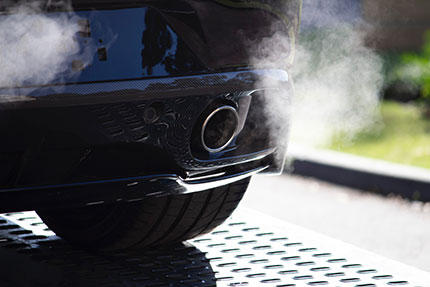- Principal Investigators:
- Randal S. Martin (USU)
- Joe Thomas (UDAQ)
- John Sohl (WSU)
- Funded for: $59,958
- Study Period: 10/1/2018 – 9/30/2020
- DAQ Contact: Joe Thomas (joethomas@utah.gov)
This study will take automotive tailpipe ammonia (NH3) measurements in laboratory and on-road settings on a sample set of diesel and gasoline vehicles representative of Utah’s vehicle fleet.
The importance of ambient ammonia (NH3) to the formation of wintertime particulate in northern Utah has been well documented in the last few years (see UWFPS, 2017). Recent emissions inventories have estimated 3,884 tons/year of ammonia emissions are emitted into the relevant airsheds, and approximately 22% is estimated to be derived from mobile sources. However, attempts by UDAQ to model atmospheric NH3 concentrations and subsequent photochemical reactions, as well as limited actual ambient NH3 observations, have suggested that current NH3 emissions inventory may be too low by an average factor of 6 (Chris Pennell, UDAQ, personal communication). Inadequate mobile source emission factors have been speculated as a likely source of at least some of these deficiencies.

Utah has traditionally focused on reducing emissions from gasoline engines as a key strategy to improve the state’s air quality. However, diesel vehicles are believed to account for nearly half of the on-road mobile source nitrogen oxides (NOx), fine particulate exhaust (PM2.5) and NH3 emissions in Utah non-attainment areas. National and international studies are revealing that diesel and gasoline vehicles may be contributing more ammonia emissions than previously accepted. As an example, Sun et al. (2016) estimated vehicular NH3 emissions in the US are likely more than twice those given in the US National Emissions Inventory. Very little information, however, exists on the true emissions from diesel and gasoline vehicles under Utah-specific conditions. Evaluating emissions, including ammonia emissions, from vehicles under Utah-specific conditions and examining how ammonia emissions are distributed in Utah valleys will help in understanding the true emissions impact from diesel and gasoline engines on Utah’s air quality. This will help UDAQ develop more targeted and effective controls to bring non-attainment areas into compliance with federal regulations.
